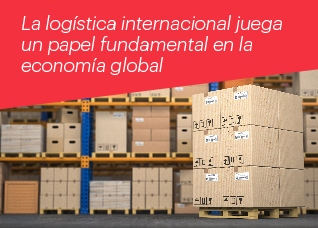Table of Contents

International logistics is constantly experiencing changes and evolutions due to various factors driving the transformation of the supply chain. In an increasingly globalized and connected world, companies face challenges and opportunities to improve their efficiency and competitiveness. In this article, we will explore the current context of international logistics, the factors driving changes in the industry, the challenges in supply chain management, technological tools for efficient logistics, and growth opportunities in the international logistics sector.
Current Context of International Logistics
International logistics plays a fundamental role in the global economy, as it allows the efficient transfer of goods and services between different countries and regions. With growing demand and changing consumer expectations, logistics companies are forced to adapt and seek innovative ways to optimize their processes.
Currently, megatrends such as digitalization, globalization, and sustainability are shaping the landscape of international logistics. Digitalization has revolutionized the way logistics operations are carried out, allowing greater visibility and traceability of products along the supply chain. Globalization has led to an increase in international trade volumes, generating the need for more efficient logistics solutions. Lastly, sustainability has become a key factor for companies, as consumers are increasingly concerned about the environmental impact of logistics operations.
Factors Driving Changes in Logistics

Several factors are driving changes in international logistics. One of the main drivers is the increasing demand for faster and more accurate deliveries by consumers. Technological advances have enabled the implementation of more efficient logistics systems, such as the use of drones and autonomous vehicles for product delivery.
Another important factor is the emergence of new trends in international trade, such as e-commerce and cross-border trade. The exponential growth of e-commerce has generated a greater need for logistics solutions for the delivery of products purchased online. Additionally, cross-border trade has driven the need for efficient logistics that allows the quick and safe transfer of goods between different countries.
Furthermore, advances in information and communication technology have enabled greater automation and digitalization of logistics processes. The use of warehouse management systems, supply chain planning software, and tracking and traceability tools has significantly improved the efficiency of international logistics.
Challenges in Supply Chain Management
While international logistics offers numerous opportunities, it also presents significant challenges in supply chain management. One of the most important challenges is the complexity of international logistics processes, which involve multiple stakeholders, different customs regulations, and the coordination of different modes of transport.
Moreover, the lack of visibility and traceability along the supply chain can make informed decision-making difficult. This can lead to delivery delays, inventory management errors, and loss of customer trust.
Another challenge is the efficient management of inventories. Companies must balance the need to have enough inventory to meet demand, with the risk of having excess inventory, which can increase costs and generate waste.
Technological Tools for Efficient Logistics
Technology plays a fundamental role in improving the efficiency and management of international logistics. There are several technological tools that can help companies optimize their logistics operations.
One of these tools is the use of warehouse management systems (WMS). These systems allow precise control and tracking of inventory, optimizing stock levels and reducing errors in inventory management.
Another example is the use of supply chain planning software (SCP), which helps companies optimize the scheduling of production, transportation, and inventory. These systems use advanced algorithms to make informed decisions and minimize operational costs.
Moreover, tracking and traceability tools allow companies to track and monitor the movement of products along the supply chain. This not only improves visibility but also helps prevent losses and theft, and allows for a quicker response to any incidents.
Growth Opportunities in the International Logistics Sector
Despite the challenges, the international logistics sector offers ample growth opportunities. The growth of international trade, driven by globalization and e-commerce, creates a growing demand for efficient logistics services.
Additionally, technological advances and innovation continue to shape the landscape of international logistics. The use of technologies such as artificial intelligence, the Internet of Things (IoT), and robotics offers enormous possibilities to improve efficiency and productivity in the supply chain.
Sustainability also represents a key opportunity for the international logistics sector. Adopting sustainable logistics practices can not only reduce the environmental impact but also generate cost savings and improve company reputations.
In conclusion, international logistics is undergoing significant changes driven by the current context, technological advances, and new trends in international trade. While there are challenges in supply chain management, there are significant growth opportunities for companies that adopt technological tools and adapt to changing demands. The international logistics sector will continue to evolve, and those who stay ahead of emerging trends will position themselves as leaders in the global landscape.”
